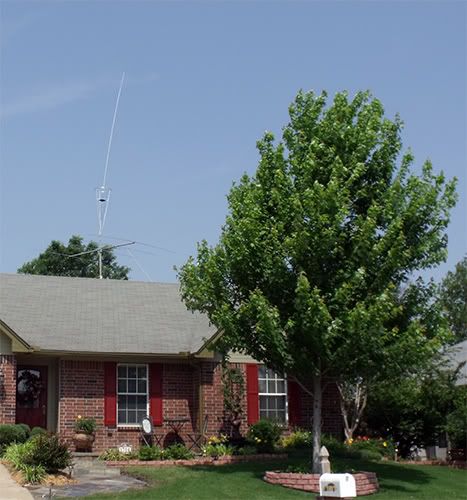There are changes that were made to the Qv4k that has resulted in movement in the SWR that I find favorable. Primarily, the changes were made to the 4 radials - length and diameter of the elements - and to the gamma match. Also, the length was reset to 29' 1".
The above posted SWR was where I landed with those changes while the antenna was mounted on the temp testing pole very near the house and close to the ground, if I recall around 14' from the earth.
This is a view of the changed radials: 90" from where they bend away from the center vertical to the tip ends, and 3/4" diameter.
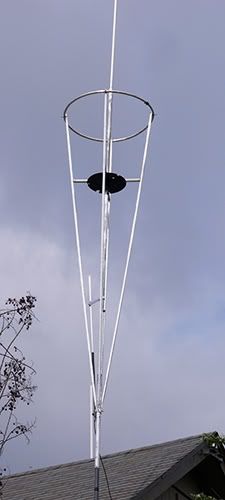
Closer up while the antenna is laying on its side you can see the close-ups of the changes to the Gamma Matching setup. The dogbone is now set at 36" up from the feedpoint of the antenna, the gamma tube is now 17" x 3/4" OD, the rod is 36" x 3/8" and pulled out from the tube 25.5" which brings the tap point around 19". Additionally, between the rod and the tube there is a nearly snug fitting dielectric tubing running the entire inner length of the tube.
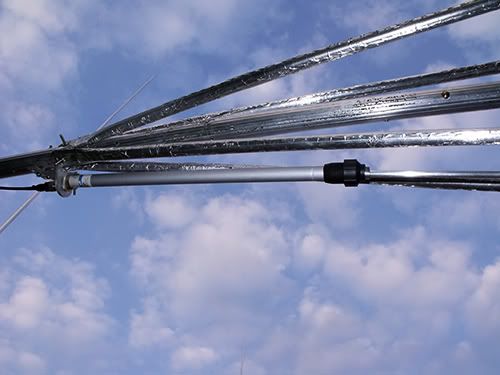
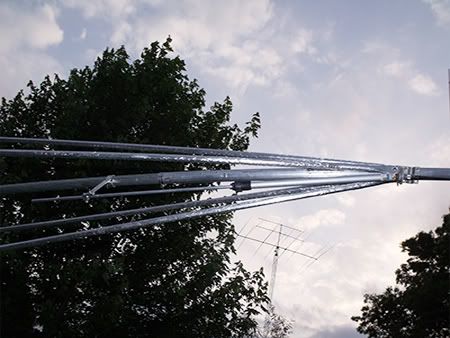
Here is a snapshot of the Qv4k sitting above the Yagi on the tip-over mast just as the sun is setting.
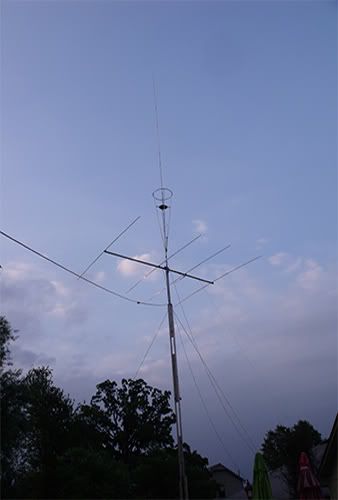
After the antenna went up higher into the air, sitting just above the yagi about a foot, the SWR curve shifted upward some.
Here it is currently from the 2.0:1 reading upward:
26.515 -------------------------- 2.0:1
26.965 -------------------------- 1.2:1
27.205 -------------------------- 1.0:1
27.405 -------------------------- 1.0:1
27.855 -------------------------- 1.0:1
28.305 -------------------------- 1.2:1
28.755 -------------------------- 1.2:1
I do not know where the SWR goes upward from there as I ran out of frequencies on the DX88HL.
Hi Homer, I've been following your progress. I'm impressed. You xcan stick with a project until it works, I wish I could teach my stubburn son to do that. dDo you think you could post your end mesurements? and did you check it for reactence or only for swrs?
Nice job.

